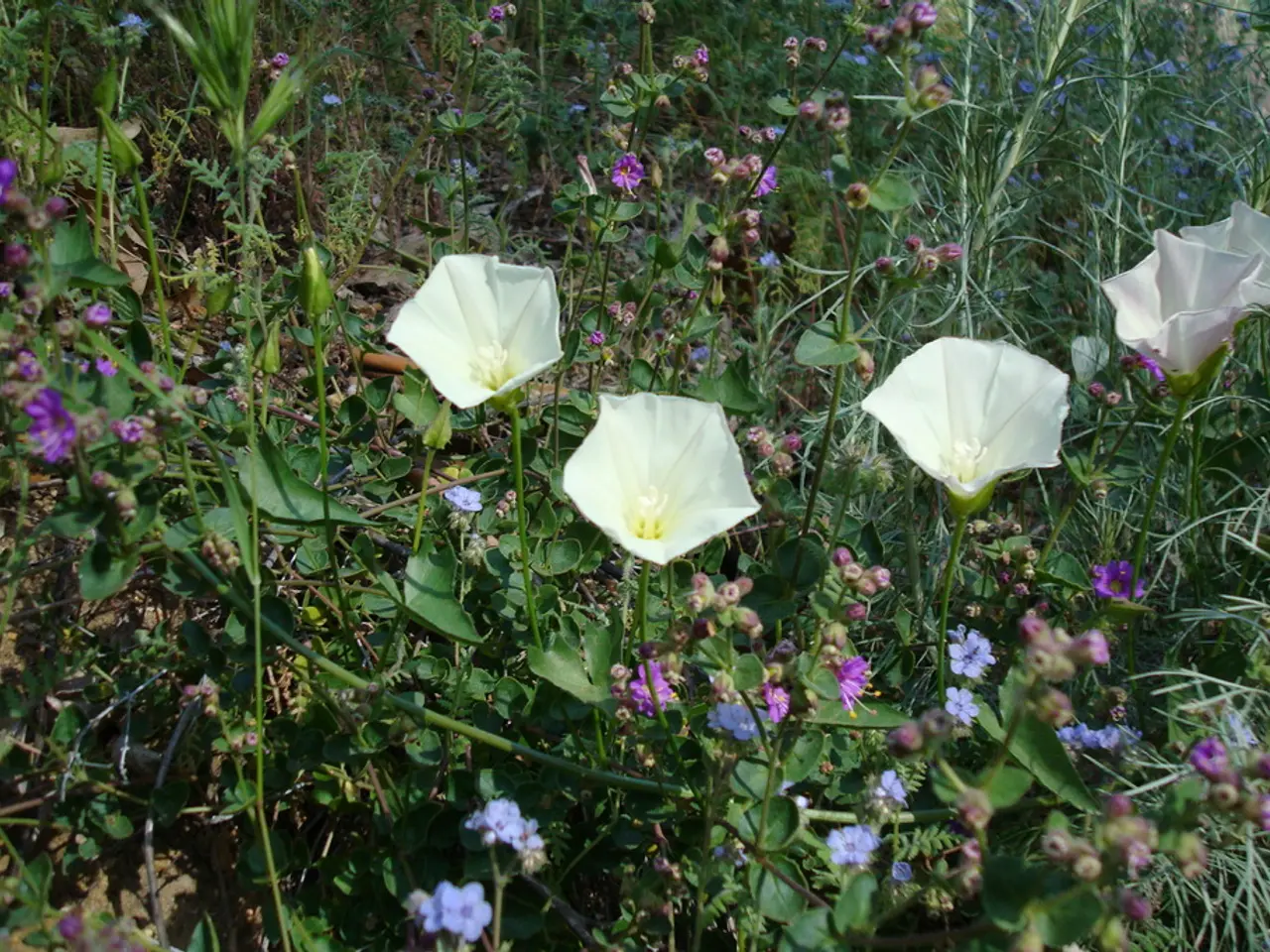Expansive Green Spaces Found on Inclined Hillsides
In the heart of Tajikistan lies the picturesque Zarafshan Valley, where a remarkable transformation is underway. Apple, walnut, and apricot trees now flourish on the mountainside, thanks to innovative and eco-friendly agricultural methods. This shift has led to higher harvest yields, resulting in a fresher, more balanced, and vitamin-rich diet for the valley's families.
The transformation is rooted in traditional yet effective practices such as terracing, sustainable water management, and soil conservation techniques. By creating flat, stepped platforms on the hillsides, soil erosion is significantly reduced, water runoff is slowed, and crops are given stable ground to grow. This approach prevents the collapse of garden beds on steep terrain, retaining soil and moisture.
Crop rotation, based on anticipated water supply from glaciers, is another key strategy. This climate-adaptive method ensures that fragile soil on slopes is not overused, promoting a more resilient agricultural system.
Sustainable grazing and reforestation efforts are also essential components of this agricultural revolution. By managing grazing to prevent excessive removal of vegetation cover, farmers maintain root structures that stabilise soil, further reducing erosion. Reforestation initiatives, led by organisations like Welthungerhilfe, are helping to restore the valley's once-depleted forests, which play a crucial role in preventing soil erosion.
In addition to these environmental measures, Welthungerhilfe is also supporting 5,500 vulnerable households in the districts of Panjakent and Ayni. Farmers are introduced to location-appropriate seeds and a wider variety of fruit and vegetable options that grow well in the region.
The Zarafshan Valley's farmers are not only benefiting from these environmental and agricultural advancements, but they are also taking pride in their crops once again. Previously struggling due to poor soil conditions, the lush vegetable gardens now present in the valley are a testament to the success of these initiatives.
To further support these farmers, 16 small and mini power plants are being rehabilitated and constructed, and 12 photovoltaic facilities are established to power water pumps. This investment in renewable energy not only enhances the productivity of the farms but also promotes a more sustainable and environmentally-friendly approach to agriculture.
Romy Lehns, Welthungerhilfe's Country Director in Tajikistan, acknowledges the untapped potential in the agricultural sector. Training sessions are provided to teach farmers about these innovative and eco-friendly methods, covering topics such as crop rotation, fruit tree cultivation, composting, organic fertilization, and integrated pest control.
Efforts to stabilise the slopes and prevent landslides are also a key focus. Participants are taught how to install lynchets and contoured gardens, which help to manage water runoff and prevent soil erosion. These measures are essential in reducing the risk of avalanches, which have become a significant concern due to past deforestation for firewood.
Approximately 35,000 people have benefited from Welthungerhilfe's support in the Zarafshan Valley. The drastic change in the valley's agricultural practices is a shining example of how eco-friendly methods can boost productivity, improve diets, and empower local communities.
The eco-friendly agricultural methods introduced in the Zarafshan Valley have not only boosted productivity but also changed the lifestyle of the valley's families, as they now have access to fresher, more balanced, and vitamin-rich diets. This transformation in the agricultural sector can be categorized under the umbrella of environmental-science, given its focus on preserving the environment through sustainable practices. The integration of renewable energy sources like mini power plants and photovoltaic facilities for water pumps in the valley's farms is a step towards a more sustainable and environmentally-friendly lifestyle, exemplifying the intersection of home-and-garden practices with science. Furthermore, reforestation initiatives aim to restore the valley's forests, highlighting the connection between gardening and the overall health of the environment, particularly climate-change mitigation.




